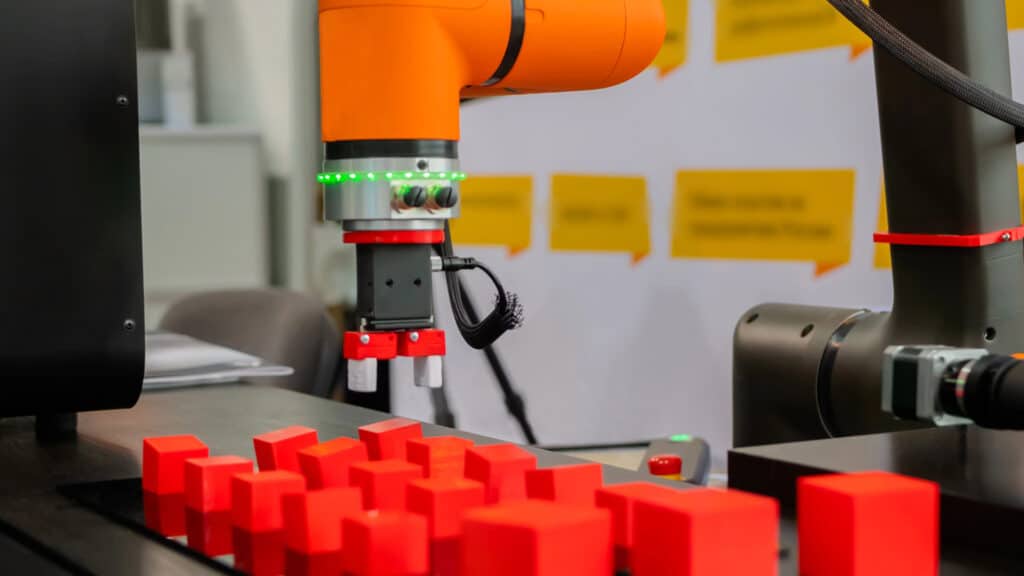The News: WalkMe Ltd., a provider of digital adoption solutions, announced its first quarter (Q1) 2024 earnings, posting strong overall revenue numbers for the period ended March 31, 2024. The company posted total revenue of $68.6 million during the quarter, reflecting a year-over-year (YoY) increase of 4%, and slightly beating the analyst consensus estimate of $68.11 million.
The company also posted a strong 6% YoY increase in subscription revenue, reaching $64.4 million, and a non-generally accepted accounting principles (non-GAAP) earnings per share (EPS) of $0.07 for Q1, compared with a $0.08 loss the same period the year before, and beating the consensus analyst estimate of $0.02 per share. The full earnings release is available on the WalkMe website.
WalkMe Posts Strong Q1 2024 Revenue and Earnings
Analyst Take: WalkMe, a provider of digital adoption platform (DAP) and related solutions, announced its Q1 2024 earnings, posting strong overall revenue numbers for the period ended March 31, 2024. A DAP is a type of software that is designed to help organizations maximize their utilization of and investment of enterprise applications, as well as the deployment and use of artificial intelligence (AI) tools and services.
By the numbers:
- Total Revenue: $68.6 million, an increase of 4% YoY
- Revenue: Subscription revenue of $64.4 million, an increase of 6% YoY
- Gross Margin: Non-GAAP gross margin was 86%, compared with 83% in Q1 2023
- Non-GAAP Operating Income: $4.4 million or 6% of total revenue, compared with a loss of ($8.8) million or (13%) in Q1 2023
- Diluted Earnings Per Share: Non-GAAP net income per share of $0.07, compared with a loss of ($0.08) in Q1 2023
- Operating Cash Flow: Net cash provided by operating activity was $17.8 million or 26% of total revenue, compared with ($7.5) million used in operating activity or (11%) in Q1 2023
- Free Cash Flow: A positive $16.6 million or 24% of total revenue, compared with negative ($8.3) million or (13%) in Q1 2023
- Cash, Cash Equivalents, Short-Term Deposits and Marketable Securities: $339.6 million as of March 31, 2024
Leveraging Generative AI’s Growth as a Business Driver
According to CEO Dan Adika, Q1 2024 was marked by the introduction of WalkMeX, which is the company’s new contextual generative AI copilot. The generative AI-powered assistant is designed to proactively deliver next-best actions to users across any workflow or application, which can reduce effort, improve efficiency, and deliver better outcomes.
WalkMeX sits on top of the core WalkMe platform, which is powered by DeepUI technology. Acquired in 2018, DeepUI works across cloud-based applications and captures user behavior data without collecting any personally identifiable information (PII) or other sensitive information. As such, the platform is designed to understand application usage, map and monitor application changes, and adapt guidance in real time to ensure that users are always able to navigate and use applications, even when new features or functions are added.
As a result of the integration of these powerful tools, the company has been able to increase its large, +$1 million in revenue customers, and reported the best renewal rate in recent quarters. WalkMe’s Q1 results for 2024 also saw subscription revenue reach the upper end of management’s previous guidance, and operational profitability metrics beat expectations.
Future Guidance and Outlook
For the second quarter (Q2) of 2024, WalkMe expects revenue of $69 million to $70 million and non-GAAP operating Income of $2.3 million to $3.3 million. For the full year 2024, WalkMe set guidance of $279 million to $283 million in revenue and increased non-GAAP operating income guidance to the range of $12.5 million to $15 million.
WalkMe’s revenue growth estimates are relatively modest, which we believe are tempered by two factors. First, customers are still cautious with spending on applications, largely due to economic factors and pressures affecting budgets, as well as the uncertainty around how AI will deliver. Second, WalkMe, while having a compelling story and value proposition, needs to hammer home the economic value of layering another application on an organization’s stack, focusing on how savings due to improved efficiency far outweigh the monthly cost of the application.
Further, with many organizations taking a multi-vendor or multi-model approach to generative AI, WalkMe may be able to leverage its position as a true third-party vendor that can be used to accurately assess generative AI application and model usage, thereby helping organizations measure the true impact of their generative AI investments.
Disclosure: The Futurum Group is a research and advisory firm that engages or has engaged in research, analysis, and advisory services with many technology companies, including those mentioned in this article. The author does not hold any equity positions with any company mentioned in this article.
Analysis and opinions expressed herein are specific to the analyst individually and data and other information that might have been provided for validation, not those of The Futurum Group as a whole.
Other Insights from The Futurum Group:
AI in Context: WalkMe’s Workflow Automation Preps Users for AI Success
WalkMe Q4 2023: The Company Reaches a Record Profitability Milestone
WalkMe Analyst Day Recap: Putting DAP Front and Center








